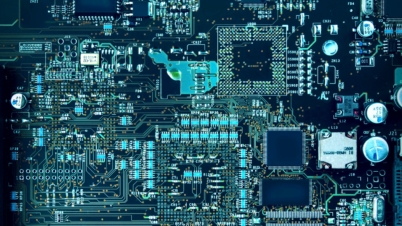Computers, telephones and other electronic devices are made out of hundreds of smaller components and subsystems which all have their own separate and complex supply chain.
About the investigation
Danwatch has been to Malaysia to meet some of the hundreds of thousands of migrant workers that play a vital part in the country’s electronics industry.
In Malaysia, we interviewed 12 workers from three different factories and have since conducted a number of interviews with workers via video calls.
The investigation was supported by the EU-funded project Make ICT Fair and published in collaboration with Setem.
Before the phone ends up in your hand, the bits and pieces have moved across numerous countries prior to being assembled and shipped to reach the stores and consumers.
Malaysia exports thousands of tons of electronic goods each year, but it is not that easy to trace exactly where it all ends up.
In 2018, electrical & electronic parts constituted more than one third of Malaysia’s export earnings. That same year, the European Union imported electrical & electronic parts from Malaysia for around eight billion euros according to the UN Comtrade.
However, for the past years, the majority of Malaysia’s electronic components have been shipped to China, Hong Kong and Singapore, mostly for use in the assembly line industry.
From here, the assembled components may well be re-exported for further assembly in some of the same countries, or they may eventually be shipped to consumer markets. For example to Europe which imports most of its electronics supplies from East Asia.
Central to everything that is modern
What is a semiconductor?
Semiconductors are at the heart of pretty much all electronic devices being produced today, from telephones and computers to burglar alarms and smart cars, since everything that is computerized or use radio waves rely on them. They are the basis of microprocessor chips, diodes and transistors.
Most semiconductor chips today are made with silicon. This is what expressions such as the Silicon Valley and the silicon economy comes from – named after the silicon in the semiconductors that all modern electronics are ultimately based on.
Source: HowStuffWorks 2019, Science ABC, Encyclopædia Britannica
Malaysia’s electronic exports can generally be divided into three main categories: Semiconductors, computer peripherals, and consumer electronic, with semiconductors or microchips being the single electronic item that Malaysia exports the most of.
They’re still central to everything that’s modern or electronic, whether you’re driving a car, or surfing the internet, or using a supercomputer—everything is ultimately based on a semiconductor, and lots of them
Jimmy Goodrich, vice president of global policy at the Semiconductor Industry Association, to Quartz
For the past two years, Malaysia has been the world’s biggest exporter of semiconductors to the US and the second largest exporter to Germany, Austria and Japan, only superseded by China, numbers from the UN Comtrade shows.
While the big electronic companies with well-known brand names once manufactured their own products, most of these companies nowadays engage a number of contractors who are responsible for tasks such as design, manufacturing and packaging. These partners employ other subcontractors as a part of the production networks.
Semiconductors are part of their own complex supply chains, before they eventually end up in pretty much all electronic equipment.
“They’re still central to everything that’s modern or electronic, whether you’re driving a car, or surfing the internet, or using a supercomputer—everything is ultimately based on a semiconductor, and lots of them”, as Jimmy Goodrich, vice president of global policy at the Semiconductor Industry Association, told the business news organization Quartz.
Inside the world’s best-known devices
For the past two years, Malaysia has been the world’s biggest exporter of semiconductors to the US. To Germany, Austria and Japan, Malaysia is the second largest exporter, only superseded by China according to the UN Comtrade.
“Malaysia’s highly vaunted semiconductor industry mainly consists of plants that ‘package’ bare chips made elsewhere, mainly in Taiwan, Singapore, and the US. Many, if not most of the assembled chips and sub-systems, then go to China, where they are incorporated in final products, many of which are then exported to global markets”, Sturgeon tells Danwatch.
This is also the case at the Possehl factory where Danwatch exposed working conditions that according to experts constitute forced labour. The factory offers stamping, plating, and packaging of parts for semiconductors and provides services to other semiconductor factories in both Malaysia, Singapore and The Philippines.
The Malaysian electronics factories are either owned by or suppliers of semiconductor companies in Germany (Possehl and Infineon), The Netherlands (NXP), France and Italy (ST Micro) and the US (Texas Instruments, Vishay).
These companies again supply the world’s best-known electronic brands such as HP, Samsung, Microsoft, Google, HTC, Philips, LG, Sony, Lenovo, Dell, Intel, Siemens and Huawei, thus potentially placing Malaysian semiconductors in some of the world’s most popular devices.






